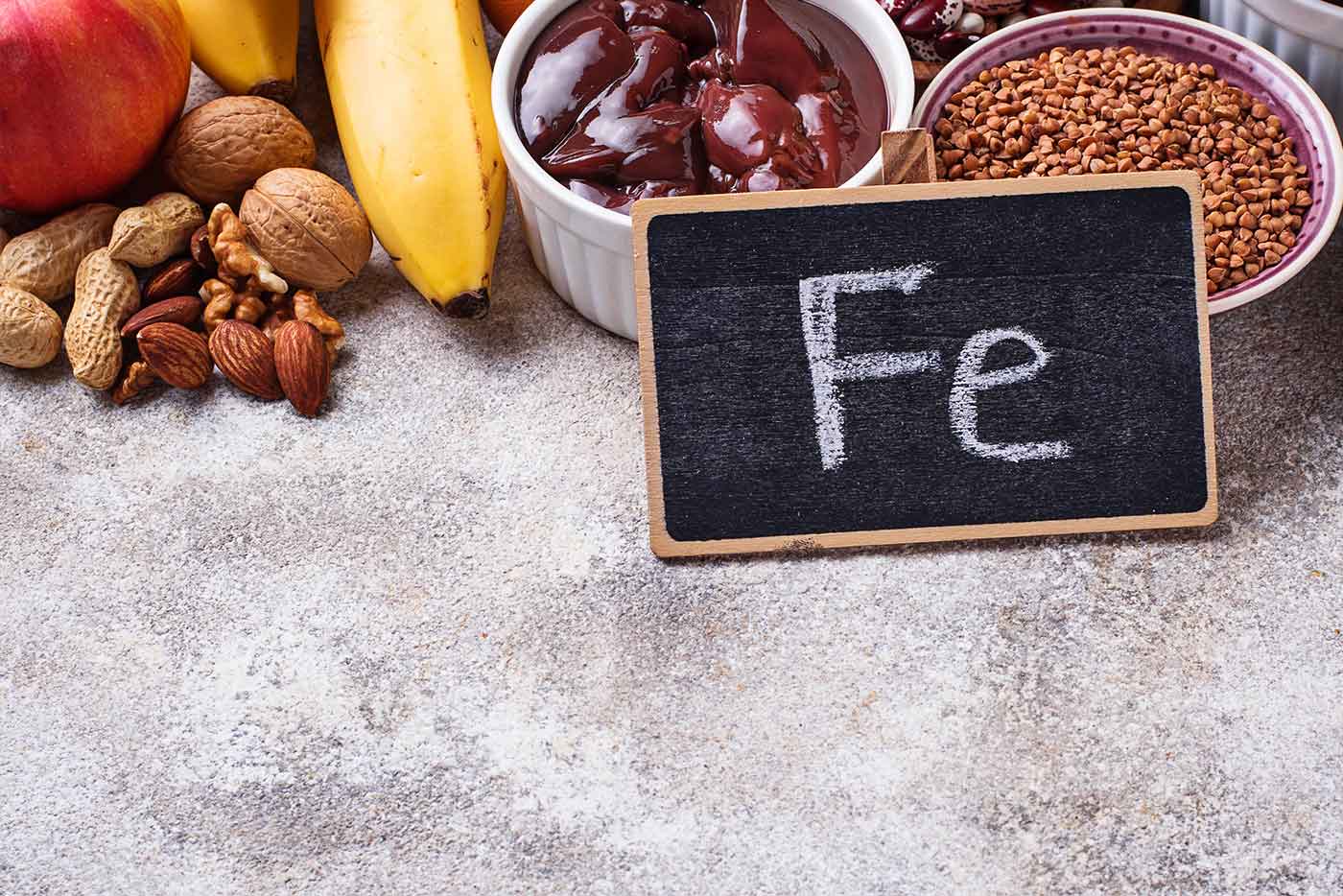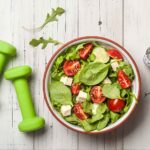We often hear the word ‘iron’ thrown around in discussions about physical health without really knowing what it means. In fact, people frequently underestimate just how important it is to have a healthy iron level. This can have various consequences and oftentimes leaves us with symptoms we don’t know how to diagnose. We might have dangerously high or low levels of iron without even realising, and struggle with side effects that go ignored or dismissed. Fortunately, understanding iron and its importance is pretty simple. Once we’re aware of it, it becomes much easier to monitor and consider in our everyday lives. By implementing simple strategies, we can maintain a healthy iron level and improve our overall well-being.
What Is Iron?
Iron is an essential mineral involved in many bodily functions. It is necessary for the production of haemoglobin, which ensures that tissues and organs receive adequate oxygen supply. Iron is also involved in energy production, supporting cellular respiration and the generation of adenosine triphosphate (ATP). It additionally contributes to brain function and development, neurotransmitter synthesis, and immune system support. Iron is furthermore vital for DNA synthesis, collagen production, and overall tissue health. Essentially, iron is important for maintaining an overall sense of well-being and vitality. It helps you to feel energised and provides you with both mental clarity and physical strength. Maintaining appropriate iron levels is crucial for optimal health, as both iron deficiency and overload can have negative consequences.
What Happens if You Don’t Consume Enough Iron?
If you don’t consume enough iron, you can develop a condition called iron deficiency, which can have several consequences for the body. When the body lacks an adequate supply of iron, it struggles to produce sufficient haemoglobin. As a result, individuals with iron deficiency may experience fatigue, weakness and decreased physical endurance. Iron deficiency can also impair cognitive function, leading to difficulties with concentration, memory and learning. Other symptoms may include pale skin, brittle nails, hair loss, increased susceptibility to infections, and a weakened immune system. In severe cases, iron deficiency can progress to iron deficiency anaemia. This condition occurs when the body’s red blood cell count and haemoglobin levels drop significantly, exacerbating the aforementioned symptoms and potentially causing heart palpitations, shortness of breath, and chest pain. It is therefore crucial to consume sufficient dietary iron, or otherwise address iron deficiency through the use of supplements.
What Happens if You Consume Too Much Iron?
Consuming too much iron can cause you to develop a condition known as iron overload or haemochromatosis. While our bodies have mechanisms to regulate iron absorption, excessive intake or certain medical conditions can disrupt this process. Iron overload can cause various health issues as the body will store excess iron in organs such as the liver, heart and pancreas. Over time, this storage can lead to organ damage and dysfunction. Symptoms of iron overload may include fatigue, joint pain, abdominal pain, loss of sex drive and irregular heart rhythms. If left untreated, iron overload can lead to serious complications such as liver cirrhosis, heart disease, diabetes and an increased risk of certain cancers.
What Is the Daily Recommended Intake?
The daily recommended intake of iron varies according to age, sex and condition. Generally speaking, however, an adult, cis-gendered woman between the ages of 19–50 should have 18mg of iron per day, while a cis man over the age of 50 needs 8mg a day. Someone who is pregnant will need 27mg a day, and a breastfeeding person will need 9–10mg. Cis-gendered women over 50 require 8mg a day. Newborns, infants, children and teenagers each have their own specific requirements for iron levels, too. If you are caring for a child, make sure to consider how their needs differ from your own.
Why Should You Test Your Haemoglobin Levels?
As well as your iron levels, you should get your haemoglobin levels checked by your doctor. There are several reasons why this test is important. For example, your doctor may need to test your haemoglobin as part of a routine blood count, which would be conducted simply to ensure overall health. These tests also screen for a variety of disorders, such as anaemia or polycythemia vera. If you are diagnosed with anaemia or polycythemia vera, your doctor may use a haemoglobin test to continue monitoring the condition and guide your treatment. If you are experiencing weakness, fatigue, shortness of breath or dizziness, it is especially important that you test your haemoglobin levels, as these symptoms may point to one of a few potential conditions. Haemoglobin levels can indicate the progression or treatment of certain health conditions, such as chronic kidney disease, cancer or certain types of chronic infections.
What To Do if Your Iron and Haemoglobin Levels Are Low
If your iron or haemoglobin levels are low, there are some strategies you can take to slowly but surely bring your iron back to a healthy level.
Consume More Iron-Rich Foods
If you’re low in iron, consuming iron-rich foods is one of the easiest and most effective ways to bring your levels back up. Foods like lean red meat, poultry, seafood, beans, lentils, spinach, tofu and fortified cereals will do the trick. There are two types of iron found in our diets: heme and non-heme. Heme iron is found in animal tissue and the body can absorb it more easily than non-heme iron. You can find it in beef, lamb, chicken, fish and kangaroo, as well as in offal products such as liver and kidney. Offal is particularly rich in heme iron, although pregnant people should avoid consuming these products.
Non-heme iron is found in animal tissue, animal-based products and plant foods. If you’re looking for vegetarian sources of non-heme iron, you’ve got plenty of foods from which to choose. These include iron-fortified breakfast cereals, wholegrains and legumes; dark green leafy vegetables such as spinach; and raisins, nuts, prunes, dried apricots, seeds, beans, peas and iron-fortified breads and pastas. If you are a vegetarian, note that you may need almost twice as much dietary iron each day as non-vegetarians.
Improve Your Iron Absorption
Consuming iron-rich foods will be far more effective if your body is better able to absorb the iron. To improve your iron absorption, pair iron-rich foods with vitamin C sources, such as citrus fruits, capsicums or strawberries. Vitamin C helps convert non-heme iron into a more absorbable form. Additionally, you should avoid consuming calcium-rich foods or supplements during iron-rich meals, as calcium can inhibit iron absorption. Instead, separate calcium and iron intake by a few hours. It can also help to reduce or avoid the intake of substances that hinder iron absorption, such as excessive tea, coffee and alcohol.
Take Iron Supplements
Consuming iron supplements with vitamin C or on an empty stomach can also enhance iron absorption. However, it’s important to consult with a healthcare professional before starting any supplementation.
Prioritise Your Wellbeing
It’s very easy to brush aside health matters that aren’t immediate or visible to the naked eye—particularly when we’re young. It can seem like there are a lot of more important things taking our attention. However, something as simple as monitoring your iron levels can make a huge difference in your daily life. Having a healthy iron level will help you to feel physically and mentally better and more capable of taking on challenges. If you suspect that something might be off, don’t ignore it. Pay attention to what you consume and how you feel, and don’t be afraid to ask your doctor for guidance. They’re there to help!















